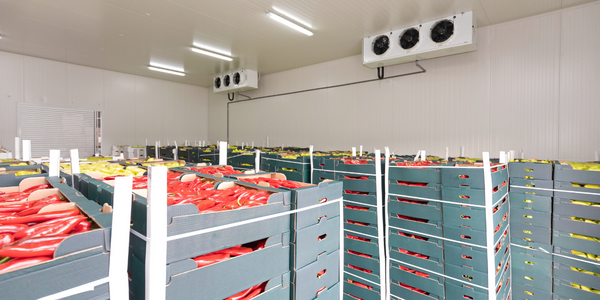Customer Company Size
Large Corporate
Region
- America
- Europe
Country
- Germany
- United States
Product
- Versant Object Database
- MOBILE telematics solution
Tech Stack
- Java
Implementation Scale
- Enterprise-wide Deployment
Impact Metrics
- Productivity Improvements
- Customer Satisfaction
Technology Category
- Application Infrastructure & Middleware - Database Management & Storage
- Analytics & Modeling - Real Time Analytics
Applicable Industries
- Transportation
Applicable Functions
- Logistics & Transportation
Use Cases
- Vehicle Telematics
- Real-Time Location System (RTLS)
- Public Transportation Management
Services
- Software Design & Engineering Services
- System Integration
About The Customer
INIT AG, based in Karlsruhe, is a global leader in the provision of Intelligent Transportation Systems and Electronic Ticketing Systems for public transportation. The company's telematics systems are designed to make public transportation more attractive, reliable, and faster. With over 300 national and international customers, INIT has successfully implemented approximately 400 projects, making it one of the few globally operating companies in the public transportation sector. Their clients range from large urban systems to smaller transport operations, each with different requirements.
The Challenge
INIT is a leading supplier of Intelligent Transportation Systems and Electronic Ticketing Systems for public transportation. Their application components place significant demands on concurrency, availability, and runtime performance. They were looking for a database technology that could efficiently store and retrieve complex real-time data in 24/7 operation. The challenge was to find a solution that could handle complex networked data and real-time requirements. The solution needed to be scalable, flexible, and capable of transparent data distribution and replication.
The Solution
After a thorough evaluation of database technologies, INIT selected Versant Object Database. While other structured data for statistics and reports continue to be managed with conventional database technology, they decided to use Versant object databases for applications with complex data and real-time requirements. All components in the MOBILE telematics solution were developed in the Java programming language. For applications with complex data and real-time requirements, INIT always uses Versant object technology. The Versant Object Database is virtually maintenance-free and can be installed with a double click. All configurations are set up automatically by the MOBILE application or by the batch files provided.
Operational Impact
Quantitative Benefit

Case Study missing?
Start adding your own!
Register with your work email and create a new case study profile for your business.
Related Case Studies.

Case Study
Airport SCADA Systems Improve Service Levels
Modern airports are one of the busiest environments on Earth and rely on process automation equipment to ensure service operators achieve their KPIs. Increasingly airport SCADA systems are being used to control all aspects of the operation and associated facilities. This is because unplanned system downtime can cost dearly, both in terms of reduced revenues and the associated loss of customer satisfaction due to inevitable travel inconvenience and disruption.

Case Study
IoT-based Fleet Intelligence Innovation
Speed to market is precious for DRVR, a rapidly growing start-up company. With a business model dependent on reliable mobile data, managers were spending their lives trying to negotiate data roaming deals with mobile network operators in different countries. And, even then, service quality was a constant concern.

Case Study
Digitize Railway with Deutsche Bahn
To reduce maintenance costs and delay-causing failures for Deutsche Bahn. They need manual measurements by a position measurement system based on custom-made MEMS sensor clusters, which allow autonomous and continuous monitoring with wireless data transmission and long battery. They were looking for data pre-processing solution in the sensor and machine learning algorithms in the cloud so as to detect critical wear.

Case Study
Cold Chain Transportation and Refrigerated Fleet Management System
1) Create a digital connected transportation solution to retrofit cold chain trailers with real-time tracking and controls. 2) Prevent multi-million dollar losses due to theft or spoilage. 3) Deliver a digital chain-of-custody solution for door to door load monitoring and security. 4) Provide a trusted multi-fleet solution in a single application with granular data and access controls.

Case Study
Vehicle Fleet Analytics
Organizations frequently implement a maintenance strategy for their fleets of vehicles using a combination of time and usage based maintenance schedules. While effective as a whole, time and usage based schedules do not take into account driving patterns, environmental factors, and sensors currently deployed within the vehicle measuring crank voltage, ignition voltage, and acceleration, all of which have a significant influence on the overall health of the vehicle.In a typical fleet, a large percentage of road calls are related to electrical failure, with battery failure being a common cause. Battery failures result in unmet service agreement levels and costly re-adjustment of scheduled to provide replacement vehicles. To reduce the impact of unplanned maintenance, the transportation logistics company was interested in a trial of C3 Vehicle Fleet Analytics.

Case Study
3M Gains Real-Time Insight with Cloud Solution
The company has a long track record of innovative technology solutions. For example, 3M helps its customers optimize parking operations by automating fee collection and other processes. To improve support for this rapidly expanding segment, 3M needed to automate its own data collection and reporting. The company had recently purchased the assets of parking, tolling, and automatic license plate reader businesses, and required better insight into these acquisitions. Chad Reed, Global Business Manager for 3M Parking Systems, says, “With thousands of installations across the world, we couldn’t keep track of our software and hardware deployments, which made it difficult to understand our market penetration.” 3M wanted a tracking application that sales staff could use to get real-time information about the type and location of 3M products in parking lots and garages. So that it could be used on-site with potential customers, the solution would have to provide access to data anytime, anywhere, and from an array of mobile devices. Jason Fox, Mobile Application Architect at 3M, upped the ante by volunteering to deliver the new app in one weekend. For Fox and his team, these requirements meant turning to the cloud instead of an on-premises datacenter. “My first thought was to go directly to the cloud because we needed to provide access not only to our salespeople, but to resellers who didn’t have access to our internal network,” says Fox. “The cloud just seemed like a logical choice.”







